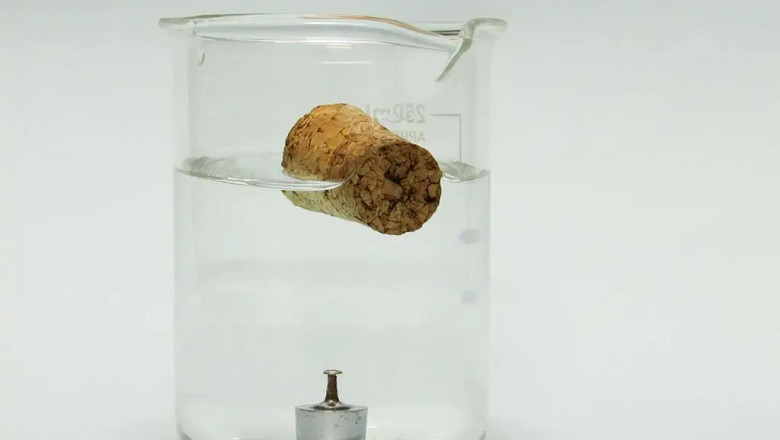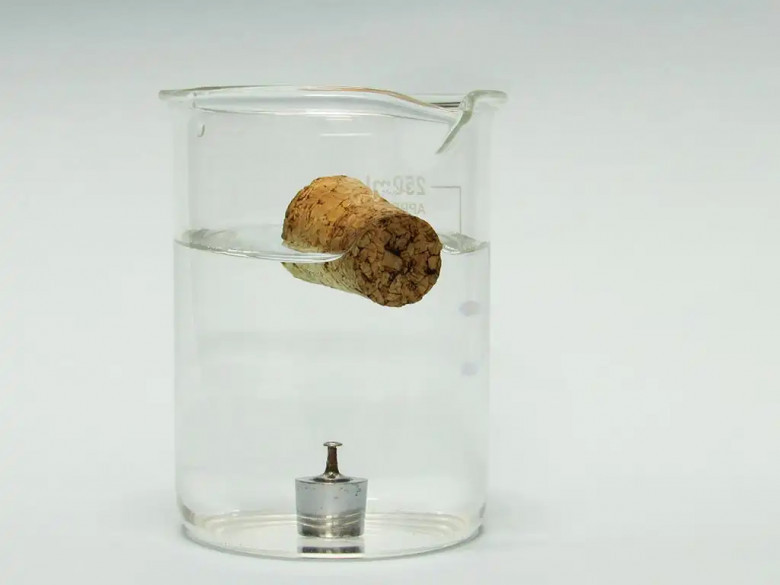views

It helps you expel waste from your body through urination, sweating, and faeces, as well as regulating your body temperature and supporting brain function.
We now have knowledge of water, but what is its density? If you prefer to study physics or are still in school, you should know that "for every substance, the density is the mass per unit volume." But don't worry if you're unsure or have questions. This blog post will go into great detail about "Density of Water," which will be useful for your exams when you need to compute a value using the density of water.
So, what is “Density”?
The mass contained in a unit volume of any object or substance is referred to as its density. Studying number density can help you understand another important concept from the gas theory. Material density is determined by the equation =m/V if m is mass and V is volume. Additionally, the number density will be n=N/V if N is the total number of particles. A fundamental characteristic of matter, density is quantified using the CGS and SI units of g/cm3 and kg/m3, respectively. The most common way to express the density of water is 1 g/cm3, but occasionally you might come across a different figure with a different unit. Water's density, for instance, can be expressed as 1 g/ml (a gramme per millilitre) or 1 g/cm3 (1 gramme per cubic centimeter). Here is a straightforward diagram to help you comprehend "water density":
|
Unit |
Water Density |
|
Density of water g/mL |
1 g/mL |
|
Density of water g/cm3 |
1 g/cm3 |
|
Density of water lb/ft3 |
62.4 lbs/ft3 |
|
Density of water kg/m3 |
1000 kg/m3 |
The temperature and air pressure of the environment affect the density of water. These density fluctuations are really small. You can use 1 g/cm3 for water density unless you need to know the precise numbers or are conducting the experiment in a region with severe temperatures or pressures. We all know that water remains in a liquid form at normal temperature when discussing density vs. temperature. Due to the presence of salt and minerals, seawater has a higher density than ordinary water. The density of seawater at the surface is approximately 1027 kg/m3.
You need to keep in mind a truth about water density, though. Although we are aware that the density of water can be stated in a variety of ways, including lb/ft3, g/ml, and g/cm3, the real density of water is slightly less than 1 g/ml. At 39.2° F (4.0° C), water has a maximum density of 0.9998395 g/ml, but the "Density of Pure Water" varies depending on the temperature. It's difficult to remember a list of values, so you can consult this table:
|
Temperature |
Density |
Weight |
|
(°F/°C) |
(grams/cm3) |
(pounds/ft3) |
|
32°F/0°C |
0.99987 |
62.416 |
|
39.2°F/4.0°C |
1 |
62.424 |
|
40°F/4.4°C |
0.99999 |
62.423 |
|
50°F/10°C |
0.99975 |
62.408 |
|
60°F/15.6°C |
0.99907 |
62.366 |
|
70°F/21°C |
0.99802 |
62.3 |
|
80°F/26.7°C |
0.99669 |
62.217 |
|
90°F/32.2°C |
0.9951 |
62.118 |
|
100°F/37.8°C |
0.99318 |
61.998 |
|
120°F/48.9°C |
0.9887 |
61.719 |
|
140°F/60°C |
0.98338 |
61.386 |
|
160°F/71.1°C |
0.97729 |
61.006 |
|
180°F/82.2°C |
0.97056 |
60.586 |
|
200°F/93.3°C |
0.96333 |
60.135 |
|
212°F/100°C |
0.95865 |
59.843 |
Did you know ice is less dense than water?
Water density falls from 4 degrees C to 0 degrees C, unlike common liquids. Water loses density when temperature rises over 4 degrees Celsius. The "density anomaly" is the name given to this phenomena. This characteristic causes ice to have a lower density than water at 4 degrees C. Unexpectedly, the majority of an iceberg's volume is found below the waterline as opposed to above it. Ice density drops by roughly 9% after freezing. This characteristic is important for life. Ice would descend to the bottom of lakes and oceans and freeze from the bottom up if water were less dense than ice. However, as you may already be aware, water is a fantastic heat insulator; deep lakes may never thaw in the summer.
The temperature of the atmosphere slowly drops below zero degrees Celsius and much lower in colder places (both in winter and on a regular basis). Ocean and lake surfaces experience a cooling and weighting of the water. The cold water descends and the hot water rises in accordance with the density rule. Until the water on lower surfaces reaches a temperature of about 4 degrees C, this convection process continues. At this point, the water's density reaches its maximum, preventing water from lakes and oceans' upper surfaces from descending, and the convection process comes to an end. Later, the topmost lake and ocean water layers cool and turn to ice. The lake or ocean's surface is then covered in floating ice. The lower levels of the water, on the other hand, continue to be 4 degrees C, which is warm enough for any aquatic critter to survive.
I'll now discuss how pressure affects density. According to the law of averages, density rises with rising pressure and falls with falling pressure. Any substance's molecules move closer to one another when pressure rises, increasing density. The molecules, on the other hand, move apart when pressure lowers. The density decreases as a result. The same reasoning also holds true for water. Water is not highly compressible, hence pressure generally has little of an impact on density.
How to Calculate the Density of a Liquid
Now that you are aware of the density of water at various temperatures, what happens if you need to determine the density of a liquid other than water? Don't worry; it's very simple. To get the density of any substance, simply divide the mass by the volume. The following is the density formula: Density is represented by the symbol, which is pronounced "rho," and equals m/v.
Using this formula, you can try to determine the density of milk, seawater, glycerin, and some other common liquids. Depending on whether you're attempting to determine the density of an irregular object, an object with a regular shape, or just any liquid, there are 3 straightforward methods. If the object is a regular shape, such a rectangle, triangle, square, etc., you must first determine its mass and volume. An object's mass is a measure of its weight. All regular polygons have a volume equation based on their height, length, and width.
Consider a rectangular piece of aluminium that weighs 865 g as an illustration. Its measurements are 10 x 8 x 4 cm. You also need to determine its density. It's simple. The process just requires two steps. To get the piece's volume, multiply the width, length, and height (using the equation for a rectangle's volume).
V = 10cm x 8cm x 4cm = 320 cm3
Now you know the volume, you need to divide the mass by the volume to get the density of the aluminum sheet ρ=m/v = 865g/320cm3 = 2.7g/cm3. So the density of aluminum is 2.7g/cm3.
But what if it’s an irregular piece of aluminum or any other object? How to find the volume in that case?
If the object has an irregular shape, it is difficult to determine its volume. Before you can determine its density, you must add a few additional steps. The irregular object should first be placed in a cylinder that has been filled with water. Now measure the volume of water it displaces. Do you know the principle of Archimedes? According to this rule, an item moves an amount of liquid according to its size. You may use the normal density equation, m/v, to determine the density of any regular substance or object now that you know how much water the aluminium piece has removed.
A separate, uneven chunk of aluminium weighing 550g would be an example. Let's say that the piece moved 204mL of water in the graduated cylinder. hence, your density equation will appear as
2.7g/mL = 550g/204mL. However, the aluminium sheet was a solid item, therefore if you want to determine the density of a liquid, pour it into a graduated cylinder, measure its volume, and then proceed to the final step, which is simply to determine the liquid's density.
Using a hydrometer to gauge the density of any liquid, including water, is the simplest method. A basic hydrometer is nothing more than a thin glass or plastic tube with a bulbous end. For particular substances, a hydrometer's scales can be calibrated to Brix, Alcohol, Baume, API, and other units. You can see the marked lines on the stem of the hydrometer tube, which show how deep the bulb descends in the liquid. The density of the liquid increases as the bulb floats higher and decreases as the bulb sinks lower. It would be beneficial to use a liquid whose density is known, in which case you might calibrate the hydrometer by floating it.
Because water has a specific gravity of 1.000 at roughly 4°C, it is the accepted liquid.
In addition to the three methods previously stated, you may determine a liquid's density by measuring its mass and volume.
Make a note of the graduated beaker's or scale's weight first.
Next, select the liquid, pour it, and note the volume.
Find the mass of the glass container containing the Next after it has been weighed. Subtract the weight of the glass from the total mass of the liquid and glass.
By dividing the liquid's mass by its density, you can now determine the liquid's density.
Although there are various applications for hydrometers, you must first have a rough notion of the scale you require and the expected value on that particular scale for the procedure you are performing. In the dairy business, hydrometers—also known as lactometers—that measure the fat content of milk are also employed. You can use this hydrometer to determine the fermentation process and the sugar content of any wine or beer. Hydrometers are also used for soil analysis. It's fascinating, isn't it?
Summary: What Is the Density of Water?
So it brings us to a close. Let's review what has been said in this blog thus far. Unless you require a precise value or are inclined toward accuracy when conducting a lab or any other Science experiment at extremely cold conditions, water density is rounded to 1000 kg/m3 in SI units or 1 g/cm3 in CGS units. And as I just mentioned, water's density varies according to both pressure and temperature. Therefore, you should think about using a different figure and account for the change in density if you're conducting an experiment at a temperature that is close to the water's freezing or boiling point. Can you determine whether ice and steam are denser or less dense than water? Well, the answer will be less \.
The equation for density is mass by volume, i.e., ρ=m/v.
Any substance's density, whether it be regular or irregular, can be determined by looking at how much liquid it displaces. Find the volume of an item that has a regular shape before moving on. However, if the object is atypical, you should use a graduated cylinder to measure the volume of water or liquid and the amount of water or liquid that the atypical object displaces. The last method is to use a hydrometer to gauge a liquid's density. We hope that this blog will clear up any confusion you may have about water's density and show you how to quickly determine the density of any liquid. Please feel free to ask a question or leave a message in the comment section if you have any doubts.
For more information visit - https://www.turito.com/blog/one-on-one-online-tutoring/what-is-the-density-of-water













